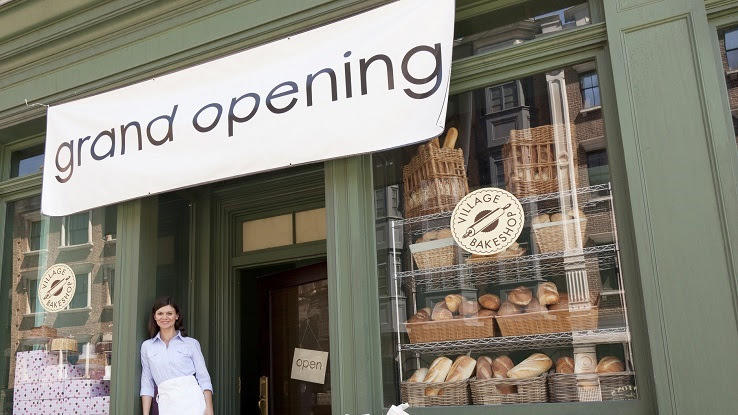How Do I Find Out If I Am In A Flood Zone?

In the United States, the location of a person's home is deeply continued to their economic outlook and their access to various opportunities. Due to a variety of factors, some communities aren't able to offer many — or any — options when information technology comes to public transportation, wages, medical care and even groceries. Other communities have ample access to jobs, housing, food, good education and methods of getting around. Discrepancies in admission to these necessities can bear on people'due south health and their power to thrive while limiting opportunities in a mode that negatively impacts quality of life for generations.
Interestingly, private investors have a risk to help reshape these outcomes for the better. The Tax Cuts and Jobs Act of 2017 included an initiative, called Opportunity Zones, that aims to "spur economic growth and job creation in low-income communities," co-ordinate to the IRS. Past allowing people to invest in Qualified Opportunity Funds, the programme seeks to encourage investment in underserved parts of the Us while offering tax incentives to investors. In this commodity, you'll learn more than well-nigh this program, including how it works, what the eligibility requirements are — and whether it's working as intended.
What Is the Opportunity Zone Program?

Opportunity Zones are areas that have been designated "economically underserved" based on past census data. Some opportunity zones are low-income neighborhoods in cities. Others are rural areas that are geographically far away from jobs and resource. In an attempt to bulldoze business and other beneficial economic opportunities to these areas, Opportunity Zones were created.
Individuals and businesses can both receive revenue enhancement deferment on their capital gains when they brand specific types of investments in Opportunity Zones. As long as an investor continues using their capital letter gains for further investment in an Opportunity Zone, they tin enjoy taxation deferrals on their invested funds for up to ten years.
How Exercise Opportunity Zones Help Communities?

Opportunity Zones give entities that already have plenty wealth to make investments the incentive to do so in communities that demand those investments almost. In ideal circumstances, these investments come in the course of businesses that serve real needs in a community, requite dorsum to the community or make a concerted effort to employ members of the community.
Sometimes, however, investors cull to build businesses that are profitable but non necessarily accessible or meaningful to locals. For case, building an expensive restaurant in the middle of a low-income farming boondocks and building a grocery store that buys nutrient from local farmers are both eligible investments, just only one of them has a lasting positive impact on the local community. Although some critics affirm that investors in Opportunity Zones are missing a adventure to give dorsum to the communities in more than meaningful ways, all investments in the community ultimately have some impact on citizens.
Nutrient deserts — regions where people lack like shooting fish in a barrel access to affordable, healthy foods — are commonly lower-income or rural communities, and the Opportunity Zones program aims to gainsay food desertification by improving admission to healthful foods. A grocery concatenation is more than likely to build a new branch in an expanse with a low average income level or a lower population if there are tax incentives. This tin influence a business owner to build their kickoff shop in an Opportunity Zone rather than a second or tertiary store in an affluent expanse.
If real estate investors choose to invest in Opportunity Zones, their efforts tin heighten holding values, benefitting local homeowners. And if the homes are affordable, they can also provide housing for the local community. Any business concern that operates in an surface area creates an opportunity for locals to find employment.
How to Make an Opportunity Zone Investment

The first step in investing in an Opportunity Zone is to find 1. While many lower-income areas tin apply revitalization, an official Opportunity Zone that's eligible for this type of investment and the associated tax benefits is certified by the U.Due south. Treasury. The U.S. Department of Housing and Urban Development (HUD) publishes an interactive map identifying certified Opportunity Zones in all U.S. states and territories.
Once an investor has an Opportunity Zone and potential investment in heed, the investor needs to institute an investment fund by completing Course 8996. When the IRS accepts this document, the investor, whether that's an individual or a business, can institute a Qualified Opportunity Fund. This fund will hold all of the money earned from the investment. After this approving, the investor can make investments within the Opportunity Zone. The procedure for making these investments is similar to others, whether the purchase of real estate, buying equity in a concern, ownership an existing business or starting a new business organisation.
Any majuscule gains that come from the business are deposited into the Qualified Opportunity Fund. At all times, a minimum of xc% of the money in the Qualified Opportunity Fund must be related to the investment inside the Opportunity Zone. This is a specific pool of money to separate the money that's meant for apply in the Opportunity Zone investment from the other money that the entity owns. Capital letter gains taxes on the coin inside the fund are automatically deferred. If the coin stays in the fund for 10 years (and is reinvested in the Opportunity Zone) in that location'due south the possibility of a lengthy deferral in paying taxes on the capital gains that can come forth with this type of investment.
How Do Opportunity Zone Investments Work?

To qualify for the tax incentives, investors must see specific standards. The money they spend on the investment in the Opportunity Zone must come from their Qualified Opportunity Fund. Rather than but banking tax-deferred capital gains for the year, the capital letter gains become into the fund to provide coin for more than investments.
For example, suppose Bonnie and Linda grade an LLC and submit Form 8996 to the IRS. Bonnie and Linda both contribute $l,000 to the Qualified Opportunity Fund. They spend $fourscore,000 ownership a building in an Opportunity Zone and utilise the remaining $20,000 to make repairs and purchase supplies for their new grocery market. They sell the business later on for $150,000. Normally, this would be a $fifty,000 capital gain. Considering this is an Opportunity Zone investment, Bonnie and Linda deposit the $50,000 profit they earn from selling the business back into their Qualified Opportunity Fund and use it for their next investment in the same Opportunity Zone. Bonnie and Linda get to go along investing without paying taxes, and their actions begin to meliorate local access to food and other goods in the Opportunity Zone.
There are stipulations for investments that tin can qualify. The purpose of Opportunity Zones is to revitalize local economies, so investors accept to take activeness to improve their investment within 30 days of purchasing it. That could be repairing a abode, building a new business or hiring new employees for an existing business. Subsequently earning capital letter gains, investors have 180 days to invest that money.
The total impact of Opportunity Zones on local communities remains to be seen. However, investors and underserved areas stand to do good from Qualified Opportunity Funds that have the needs of low-income communities into account — and aim to improve weather over the long term in a lasting way.
Source: https://www.askmoney.com/investing/opportunity-zone-investments?utm_content=params%3Ao%3D1465803%26ad%3DdirN%26qo%3DserpIndex
Posted by: halcombruimilot.blogspot.com


0 Response to "How Do I Find Out If I Am In A Flood Zone?"
Post a Comment